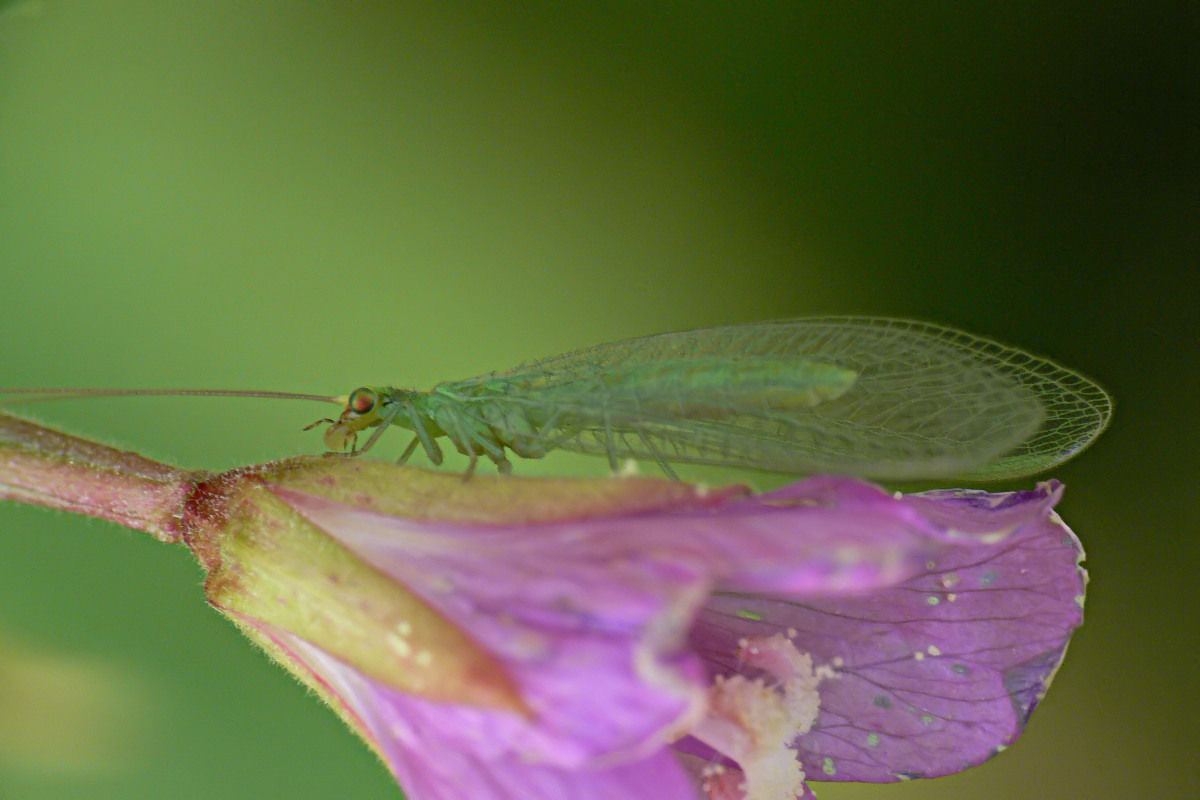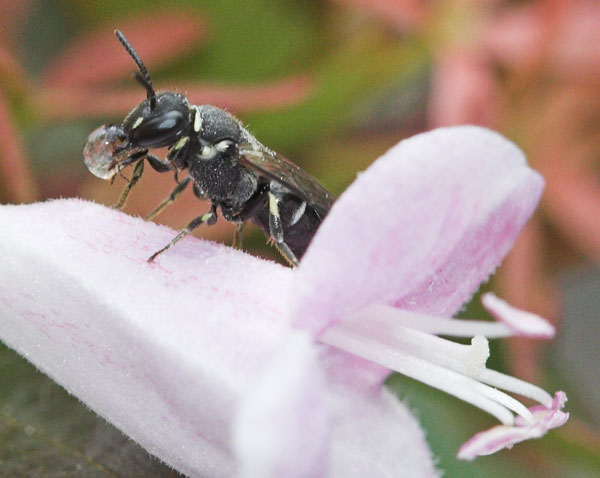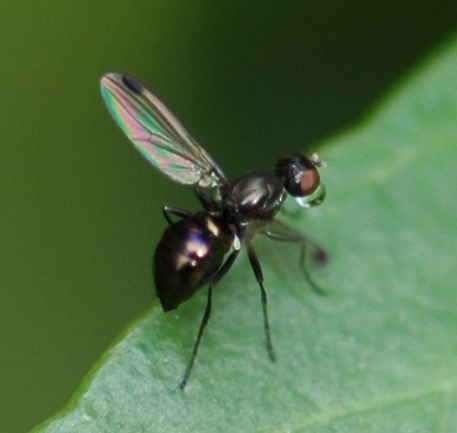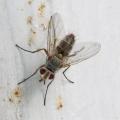Diptera.info :: Miscellaneous :: General queries
Who is here? 1 guest(s)
|
Fly bubble blowing
|
|
| pierred |
Posted on 27-06-2006 06:47
|
|
Member Location: Paris (France) Posts: 1413 Joined: 21.04.05 |
Yet another family. This time, a Sepsid (Themira ?) pierred attached the following image:  [72.76Kb] Pierre Duhem |
|
|
|
| Nikita Vikhrev |
Posted on 27-06-2006 09:05
|
|
Member Location: Moscow, Russia Posts: 9256 Joined: 24.05.05 |
I think it is Nemopoda nitidula. Nikita Nikita Vikhrev - Zool Museum of Moscow University |
|
|
|
| Paul Beuk |
Posted on 27-06-2006 09:06
|
|
Super Administrator Location: Netherlands Posts: 19280 Joined: 11.05.04 |
The tip of the wing seems shaded so that is the logical conclusion.
Paul - - - - Paul Beuk on https://diptera.info |
| pierred |
Posted on 27-06-2006 20:45
|
|
Member Location: Paris (France) Posts: 1413 Joined: 21.04.05 |
Thanks to both of you
Pierre Duhem |
|
|
|
| Nik Wiman |
Posted on 28-06-2006 19:54
|
|
Member Location: Pacific Northwest USA Posts: 1 Joined: 12.06.06 |
Hi folks, first time poster. My .02 on fly bubbling. I tend to think it has a digestive function. The tachinids I'm rearing do it after imbibing on a nectar mixture I feed them, regrdless of temperature, sun position, or sex. Attached photo of Nemorilla pyste, a parasitoid of Choristoneura spp. taken today 6/28/06. Cheers, Nik
Nik Wiman attached the following image:  [25.36Kb] |
|
|
|
| Paul Beuk |
Posted on 28-06-2006 20:13
|
|
Super Administrator Location: Netherlands Posts: 19280 Joined: 11.05.04 |
Hmm, just a little reminder: http://www.dipter...#post_2561.
Paul - - - - Paul Beuk on https://diptera.info |
| walwyn |
Posted on 05-08-2006 21:46
|
|
Member Location: Warwickshire, UK Posts: 203 Joined: 16.06.06 |
Not just diptera I have a photo of Neuroptera engaged in the same activity. |
| walwyn |
Posted on 05-08-2006 21:49
|
|
Member Location: Warwickshire, UK Posts: 203 Joined: 16.06.06 |
I have a photo of a lacewing engaged in the same activity.
walwyn attached the following image:  [133.32Kb] |
| brian reily |
Posted on 22-08-2006 22:44
|
|
Member Location: Posts: 41 Joined: 08.08.06 |
many flies regurgitate in order to digest their food
confused... as usual |
|
|
|
| LordV |
Posted on 24-08-2006 10:21
|
|
Member Location: Posts: 671 Joined: 06.09.05 |
brian reily wrote: many flies regurgitate in order to digest their food But how does this help them digest the food ? Concentration of the food? More/fresh enzymes from the salivary glands ? Brian V. |
|
|
|
| Cole Gilbert |
Posted on 28-08-2006 00:47
|
|
Member Location: Posts: 1 Joined: 28.08.06 |
I was just alerted to this list and this fly behavior. I agree with the suggestion that data be taken on the orientation of the fly and drop relative to the sun as the thermoregulatory idea may have some traction. I have never seen the behavior, but the photos are reminiscent of behavior of nectar sipping Hymenoptera that regurgitate a droplet of nectar thus exposing it to the air for evaporation of water and concentrating its contents. |
|
|
|
| pierred |
Posted on 30-08-2006 21:35
|
|
Member Location: Paris (France) Posts: 1413 Joined: 21.04.05 |
Hello, Just for the fun, an Hymenoptera bubbling !! pierred attached the following image:  [46.68Kb] Pierre Duhem |
|
|
|
| Don Martin |
Posted on 19-09-2006 10:10
|
|
Member Location: Oslo, Norway Posts: 37 Joined: 19.09.06 |
Here is another one. A Mesembrina mystacea facing east in a cloudy but light afternoon  The temperature is about 13 C The temperature is about 13 C Don Martin |
| Paul Beuk |
Posted on 19-09-2006 10:44
|
|
Super Administrator Location: Netherlands Posts: 19280 Joined: 11.05.04 |
Nice pic! 
Paul - - - - Paul Beuk on https://diptera.info |
| Cor Zonneveld |
Posted on 14-10-2006 11:48
|
|
Member Location: Amstelveen, the Netherlands Posts: 840 Joined: 14.10.06 |
LordV wrote: New theory on this behaviour. Over the last few cold bright days (air temp around 3-6'C) Every time the sun has actually been bright, I've found all the Scatphaga on one bush in the bright sun were bubbleblowing (around 3-4 of them). I don't normally see bubble blowing at that high frequency. Wonder if it's a way of warming up faster by letting the drop warm up in the sun and then sucking it back in again. Another reason for wondering this is normally flies seem to to sunbathe with their back to the sun (ie head away from the sun), whilst when they are bubble blowing they always seem to be facing the sun or at least at right angles to it, so the bubble is getting full sun. Brian V. I wonder about the physics of the process. Flies are generally some rather dark colour, so they take up solar heat easily. The fluid drops are mostly translucent, so any light just passes through them and little heat will be absorbed. I attach a photograph of a small Sepsidae with a bubble. It was fully clouded weather, and on top of this, the fly would have been in full shadow if there were any sunshine! So to me physics and some observations are not consonant with the heating-up-your-food hypothesis. I'm sorry I cannot come up with something more positive... Cor Zonneveld attached the following image:  [139.83Kb] Edited by Cor Zonneveld on 14-10-2006 12:09 Thanks for your attention Cor Zonneveld |
| LordV |
Posted on 14-10-2006 12:14
|
|
Member Location: Posts: 671 Joined: 06.09.05 |
Cor Zonneveld wrote: I wonder about the physics of the process. Flies are generally some rather dark colour, so they take up solar heat easily. The fluid drops are mostly translucent, so any light just passes through them and little heat will be absorbed. I attach a photograph of a small Sepsidae with a bubble. It was fully clouded weather, and on top of this, the fly would have been in full shadow if there were any sunshine! So to me physics and some observations are not consonant with the heating-up-your-food hypothesis. I'm sorry I cannot come up with something more positive... Think you are probably correct ie heat transfer is not significant factor. I think it much more likely that it is purely a concentrating process by evaportion of perhaps a chance to remix the stomach contents with a new batch of salivary gland enzymes. Brian V. |
|
|
|
| pierred |
Posted on 14-10-2006 12:59
|
|
Member Location: Paris (France) Posts: 1413 Joined: 21.04.05 |
Hello, Paul Beuk wrote: Hmm, just a little reminder: http://www.dipter...#post_2561. I think we should all look at what Paul said, quite at the beginning of this thread (which is really interesting as such, anyway, thanks for going on, folks). This is a matter of digestion. Flies (and probably other insects) absorb as much as they can at the spot, knowing that they will after have time to hunger or digest. On the other hand, in Matile/Seguy's work, the tractus of diptera is described as comprising a "jabot" (in French, I understand it as a side chamber) where the fly can accumulate what it intakes, knowing it will have later on time to manage/transform it. Pierre Duhem |
|
|
|
| pierred |
Posted on 18-03-2007 07:58
|
|
Member Location: Paris (France) Posts: 1413 Joined: 21.04.05 |
Hello, This time, another point of view on the bubble. One can see how the bubble is formed by the mouthparts. pierred attached the following image:  [49.44Kb] Pierre Duhem |
|
|
|
| saturdaze |
Posted on 05-04-2007 21:22
|
|
Member Location: California Posts: 6 Joined: 05.04.07 |
I suspect that the regurgitation is simply a mechanism to concentrate the fluid food by evaporation. Because nutrients are dilute in many fluid foods, this behavior relieves the excretory system of some of its work. Honey Bees extend tongues and develop a film of nectar, and the fanning of wings in the hive increases evaporation due to increased heat and air circulation--result: honey. |
|
|
|
| Kahis |
Posted on 05-04-2007 22:13
|
|
Member Location: Helsinki, Finland Posts: 1999 Joined: 02.09.04 |
saturdaze wrote: I suspect that the regurgitation is simply a mechanism to concentrate the fluid food by evaporation. Because nutrients are dilute in many fluid foods, this behavior relieves the excretory system of some of its work. Honey Bees extend tongues and develop a film of nectar, and the fanning of wings in the hive increases evaporation due to increased heat and air circulation--result: honey. The problem I have with this idea is that it makes little sense from a physicist point of view. A spherical droplet is the worst possible geometry for evaporation; it has the smaller surface area for the volume. A thin film is much better for this purpose. Absorbing water and allowing it to evaporate from the tracheal system would be probably much more efficient. For most insects retaining enough water is a problem, not having too much of it 
Kahis |
| Jump to Forum: |















